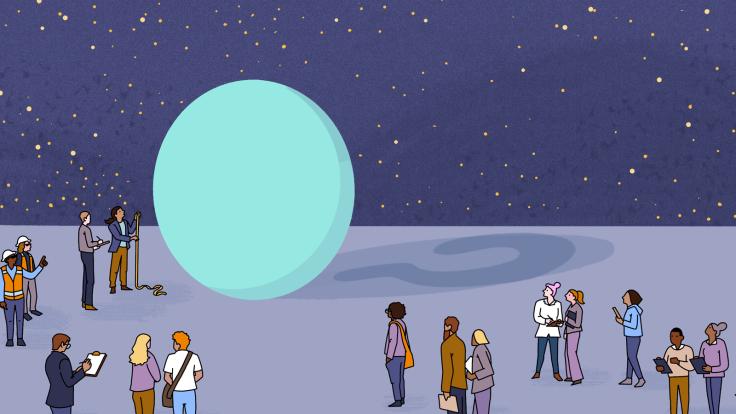Ron Badger is standing inside what looks like a cave, but is actually the windowless belly of Stanford Linear Accelerator Center's Building 136. And just like a cave, the thick cement walls make cell phones go dead at the threshold. Badger is standing near a stack of black receivers as he picks up his radio and calls to someone half way across campus. They answer back loud and clear.
The SLAC radio and pager system allows employees and visitors to communicate 40 feet below ground in the accelerator tunnels, inside the PEP and SLD ring tunnels, and out to the far corners of the campus. It all works through a simple set of relays.
If Mike Harms is above ground trying to send a page or communicate by radio with Badger who is in the tunnels of the accelerator or inside a dense building, his radio will broadcast a signal that gets picked up by one of three large antennae on campus. They are located at the repeater Building 443 (on the hill above the research yard), at Building 136, and at Sector 1 of the linac. The signal is captured by the antennae, which runs it through a system of cables that extend through many tunnels and buildings on campus. The cable releases the radio wave-or "leaks" it-into the tunnel where Badger's radio picks it up.
To send a message back up to Harms, Badger's radio sends a signal that is picked up by the same leaky cable that delivered the incoming message. This multipurpose leaky cable will also redistribute Badger's message throughout the tunnel, so other people underground can talk to him as well. The cable then carries the signal back to one of the same three antennae, where the signal prepares to be broadcast above ground.
The cable takes the signal to a "voter" receiver, which actually does some voting. As a radio wave is sent out from a radio, it may enter more than one receiver. If all of these signals were to be broadcast, they would overlap and cause interference, making for bad reception. So the voter receiver decides which signal is strongest and sends that input up to the main antenna, where it is broadcast across the campus. In this way, Badger's outgoing radio signal makes its way to Harms' radio.
by Calla Cofield
This story originally appeared in SLAC Today, June 23, 2008







